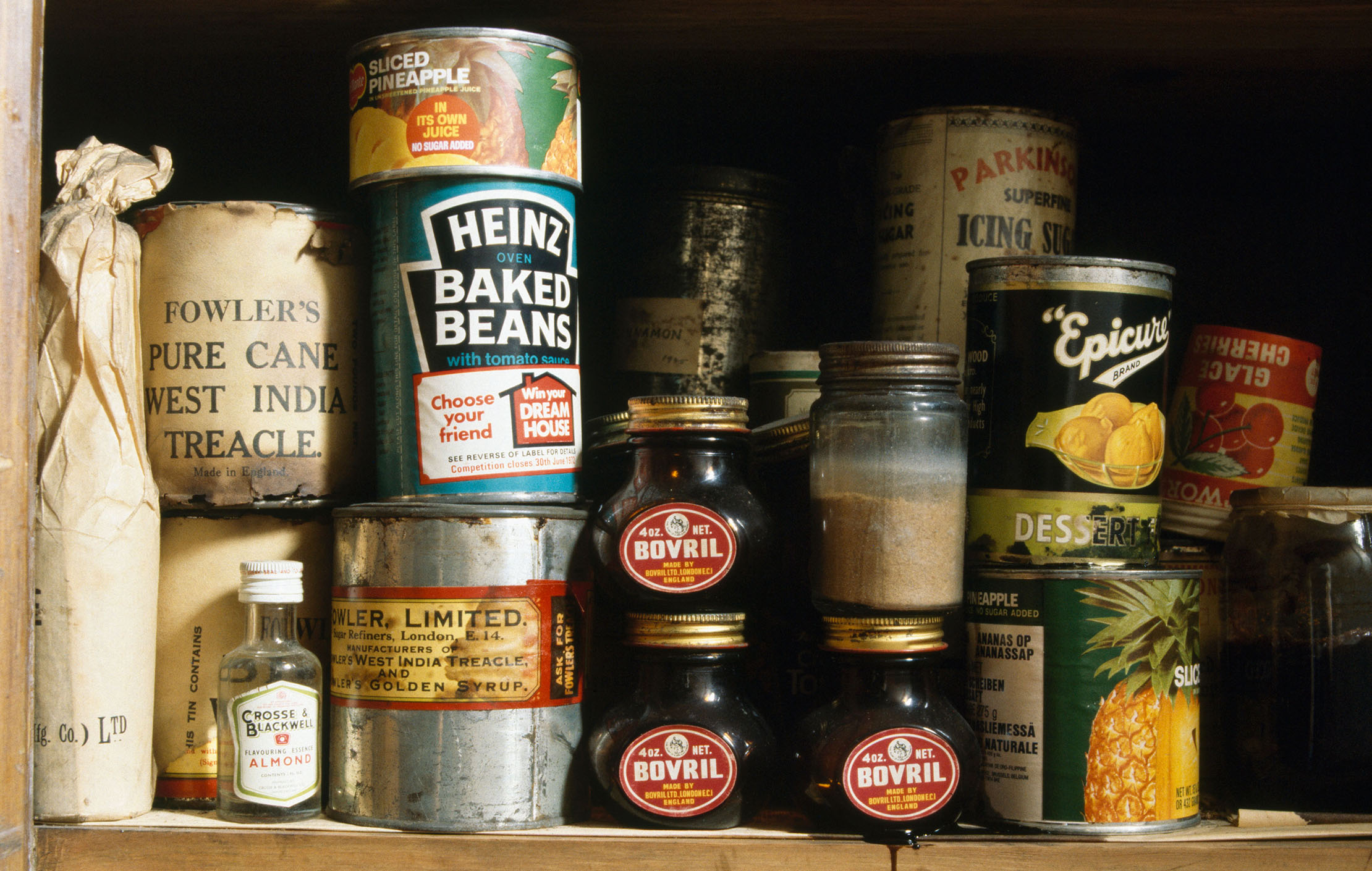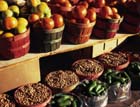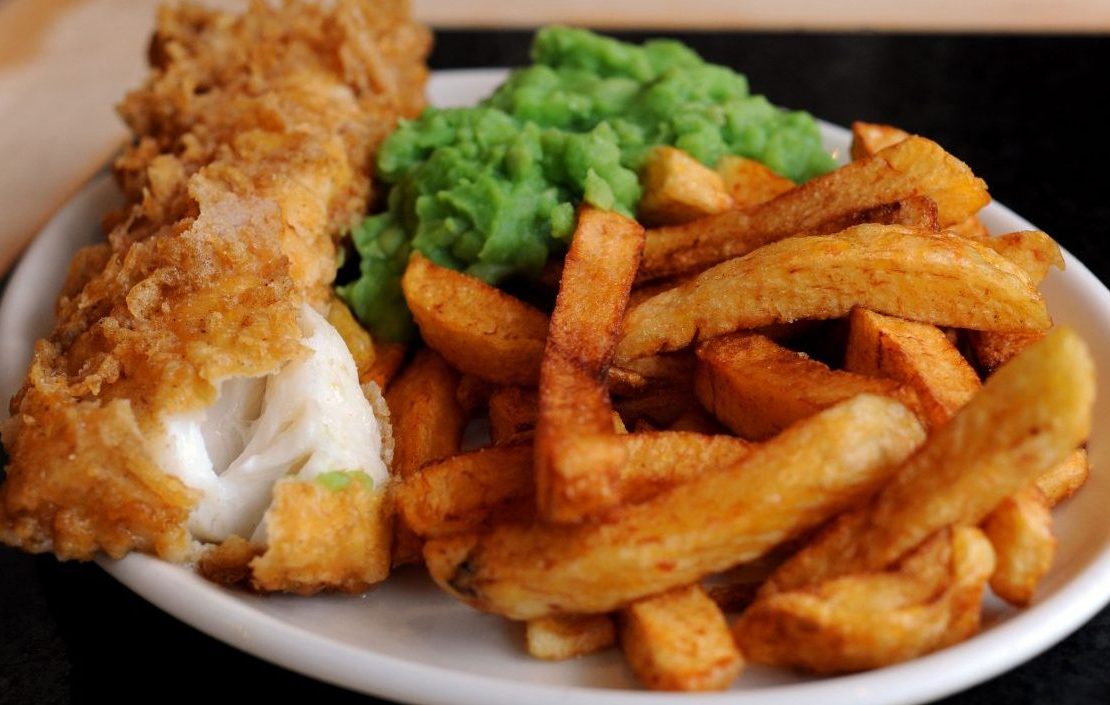Tom Parker-Bowles: Why a well-stocked larder is a very splendid thing, and the building block for 1,000 dishes
A well-stocked store cupboard is an essential of British life in the 21st century, says Tom Parker-Bowles as he reveals the various bits and bobs in his own kitchen.


Poor old Mother Hubbard. What with her bare cupboard and its distinct lack of bones, or anything else at all. I feel for that pipe-smoking, jig-dancing, goat-riding dog, really I do, because a well-stocked pantry, larder or store cupboard is the backbone of any self-respecting home, a place from which great feasts are lovingly conjured and succour is mixed with the salt.
As a child, the larder was always a place of cool contemplation, dimly lit and faintly scented with spice and damp old stone. I remember tins of Texan fruit cake (from a friend in the Lone Star State); endless bags of sugar and flour; neat boxes of Rowntree’s jelly; Frank Cooper’s Original Oxford Marmalade (my mother was devoted to the stuff); a few ancient tins of sardines (and a few battered cans of lord only knows what); bottles of Worcestershire Sauce and Tabasco; Carr’s Table Water Biscuits; Gentleman’s Relish; Twinings English Breakfast tea; anchovy essence; local honey; Marmite; Baxters Beef Consommé; Heinz Baked Beans; vomit-scented, pre-grated ‘Parmesan’; and Rose’s Lime Juice Cordial (a back-up for the drinks table supply).
There were also fresh eggs, collected from the chickens, in a pretty, day-demarcated box; leaves of gelatine; Sarson’s vinegar; Sainsbury’s spaghetti; a jar of faded herbs (probably mint, but no one could be quite sure); antediluvian cake decorations; Sugar Puffs; Shreddies; porridge oats; and a few sticky jars of homemade jam.
The only hint of the exotic was a plastic pot of Sharwood’s curry powder, for the ghastly and ubiquitous Coronation chicken.
Occasionally, it offered fertile hunting grounds – the remains of the previous day’s roast or apple crumble, a few slices of smoked salmon or a truckle of Cheddar. At Christmas, there was always a whole ham, to be hacked at every time you passed, plus mince pies, boxes of dates (invariably recycled each year), a whole Stilton and pâte dé foie gras, en croute. In winter, usually a brace of pheasant or partridge, hanging from a piece of twine.
It was, however, more utilitarian than utopian, a practical store that was remarkable mainly for its essential Englishness.
"Unlike the rather austere pragmatism of home, this larder seemed drenched in eternal sunshine"
My grandparent’s larder was a touch more exotic. Thanks to a lifelong love affair with the south of Italy (fuelled by their cook, Roberta, the Italian equivalent of Anatole), there was proper dried pasta; tins of good tuna and San Marzano tomatoes; fresh Parmesan from Justin de Blank in Pimlico (together with endless other bags and boxes bearing his name); fresh mozzarella in its chalky water; pound after pound of thinly sliced prosciutto, wrapped in greaseproof paper; bottles of peppers and artichokes; olives; huge bags of peanuts; and Chocolate Bath Olivers.
Sign up for the Country Life Newsletter
Exquisite houses, the beauty of Nature, and how to get the most from your life, straight to your inbox.
There was also sugar, lots of sugar in myriad forms, from brown lumps of La Perruche, through caster, demerara and those shiny, gem-like shards that were only served with coffee. Plus whatever was blooming in their magnificent vegetable garden, from asparagus and broad beans to tomatoes, courgettes, plums, peaches and figs. Unlike the rather austere pragmatism of home, this larder seemed drenched in eternal sunshine.
Thirty-five years on and things are rather more, well, global. It would be a rare kitchen that didn’t have soy sauce or Sacla pesto, Indian pickles or Spanish olive oil. Cheaper travel and a barrage of food television, plus the rise of the internet, means that Korean gochujang or Japanese kombu is but a click away. Even the smallest of supermarkets will stock rice vermicelli noodles and fish sauce.
As our tastes have grown more adventurous, so our larders have transformed. A quick glance into mine (well, more vast pull-out cupboard than old-school larder) is hardly indicative of the average Briton. I spend much of my life travelling the globe in thrall to my gut and rarely, if ever, return home without something edible, carefully wrapped in T-shirts and packed into my bag.
There’s a whole section of Grade A Sichuan pepper from Chengdu; pasilla chillies and adobo paste from Mexico City; endless barbecue rubs from Texas and Tennessee; beautifully illustrated tins of delectable seafood (cod’s roe, baby octopus, clams) from Portugal; garum from Italy; shrimp powder from Korea; and Japanese Katsuobushi.
All useful in their own way, but hardly essentials.
'Colman’s mustard powder is eternally useful'
However, there are certain staples that are ever-present, from dried pasta and rice (jasmine, basmati and arborio) to every conceivable variety of noodle: Japanese udon and soba, Chinese egg, Vietnamese flat pho and Thai khanohm jeen. Plus Chinese cup noodles and Itsu ones, too, for rapid satisfaction. With these carbohydrate classics on hand, a decent dinner is always nearby.
Some old classics endure. Worcestershire Sauce, of course, and Heinz Baked Beans, eaten cold from the can. Marmite, always Marmite, and that old faithful Baxters consommé, invaluable as a quick supper, stock substitute and Bullshot ingredient. Good-quality tinned tomatoes and jars of passata mean homemade tomato sauce is only a dash of olive oil and a chopped onion away.
Fresh spices are key, bought whole, rather than pre-powdered, kept in sealed glass jars and replaced every six months. Plus two tins of Spanish paprika, hot and smoked. Colman’s mustard powder is eternally useful – mix into dressings, sprinkle over roast beef before roasting or simply mix up a fresh batch of fierce, sinus-blasting bliss. Vinegars, too: white wine, cider and rice. And oils: peanut for stir-frying, extra-virgin olive for dressings and Chinese chilli for, well, everything. Panko breadcrumbs provide a delectably crisp crust for schnitzel and goujons and those little Knorr Stock Pots are great for Sunday gravy.
Tinned or bottled anchovies are one of my favourite ingredients of all. I adore the Ortiz varity, to be devoured on toast, spread with a half inch of cold butter, or slipped into a leg of lamb alongside rosemary and garlic. Decent tinned tuna, the eternal snacking standby, mixed with red onion, fresh chillies, lemon juice, olive oil, salt and those wonderful El Navarrico chickpeas. Throw in the usual flours (plain, wholemeal and ‘OO’), plus sachets of yeast and you have the building blocks for 1,000 different dishes.
Okay, so some ingredients are used more than others (hello, Oaxacan crushed-grasshopper powder, Chinese snake wine and hot sauces with more punch than pepper spray), but a well-stocked larder is a very splendid thing.
It may not be the room of my dreams, like my sister’s and brother-in-law’s, down in the country. Even my mother is jealous – but that’s a whole different tale. Whatever the size of your larder, be it tiny shelf or cavernous vault, take pride.

Credit: Graham Day / Getty
In praise of the great British sausage – and five of the best bangers you can buy
Few foods are equally at home on the tables of royalty as they are at the local greasy spoon, but

Time to eat seasonally - and eat better
A new campaign chimes well with the increasing awareness people have about eating local, seasonal food

Credit: Alamy
In praise of Fish and Chips, the ultimate British dish – and our pick of places to try it
Tom Parker Bowles is food writer, critic and regular contributor to Country Life.
-
 Two quick and easy seasonal asparagus recipes to try this Easter Weekend
Two quick and easy seasonal asparagus recipes to try this Easter WeekendAsparagus has royal roots — it was once a favourite of Madame de Pompadour.
By Melanie Johnson
-
 Sip tea and laugh at your neighbours in this seaside Norfolk home with a watchtower
Sip tea and laugh at your neighbours in this seaside Norfolk home with a watchtowerOn Cliff Hill in Gorleston, one home is taller than all the others. It could be yours.
By James Fisher